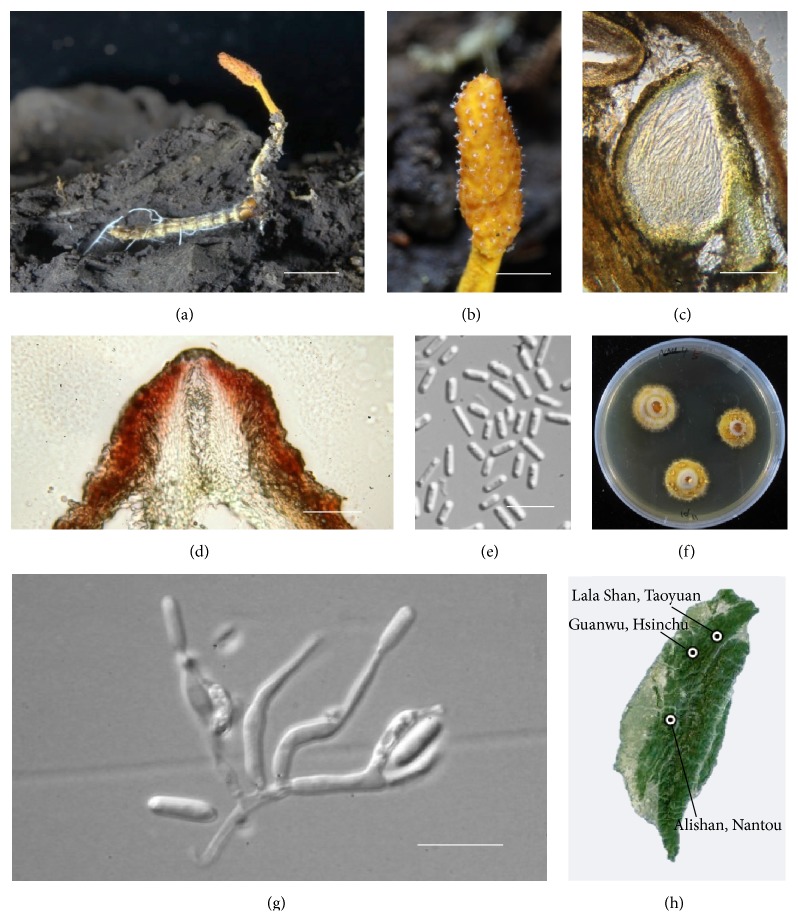Figure 1.
Morphological and anatomical features of the Ophiocordyceps formosana collected from Taoyuan County, Taiwan. (a) The fungal ascostromata arise from the host Tenebrionoidea insect corpses with cylindrical stalks. Bar = 10 mm. (b) The orange stromatal head exhibits an oblong shape. Bar = 3 mm. (c) An ovoid perithecium embedded in a stroma is shown in cross section. The asci reside within the ovoid perithecium and obliquely align with the perithecium. Bar = 100 μm. (d) The ostiole of a perithecium showing a narrow opening in the neck surrounded by a thick perithecial wall. Bar = 25 μm. (e) Cylindrical partspores derived from fragmented ascospores. Bar = 10 μm. (f) The colonies were velutinous or floccose with exudating droplets and orange to white in color on a PDA culture plate. (g) A Hirsutella anamorph of O. formosana; the branched conidiophore is curl-shaped and bears baciloid-shaped conidia. Bar = 10 μm. (h) The documented habitats of O. formosana specimens in Taiwan [22, 35] (source: Taiwan; 23°46′50.90′′N and 120°57′50.54′′E from Google Earth).

